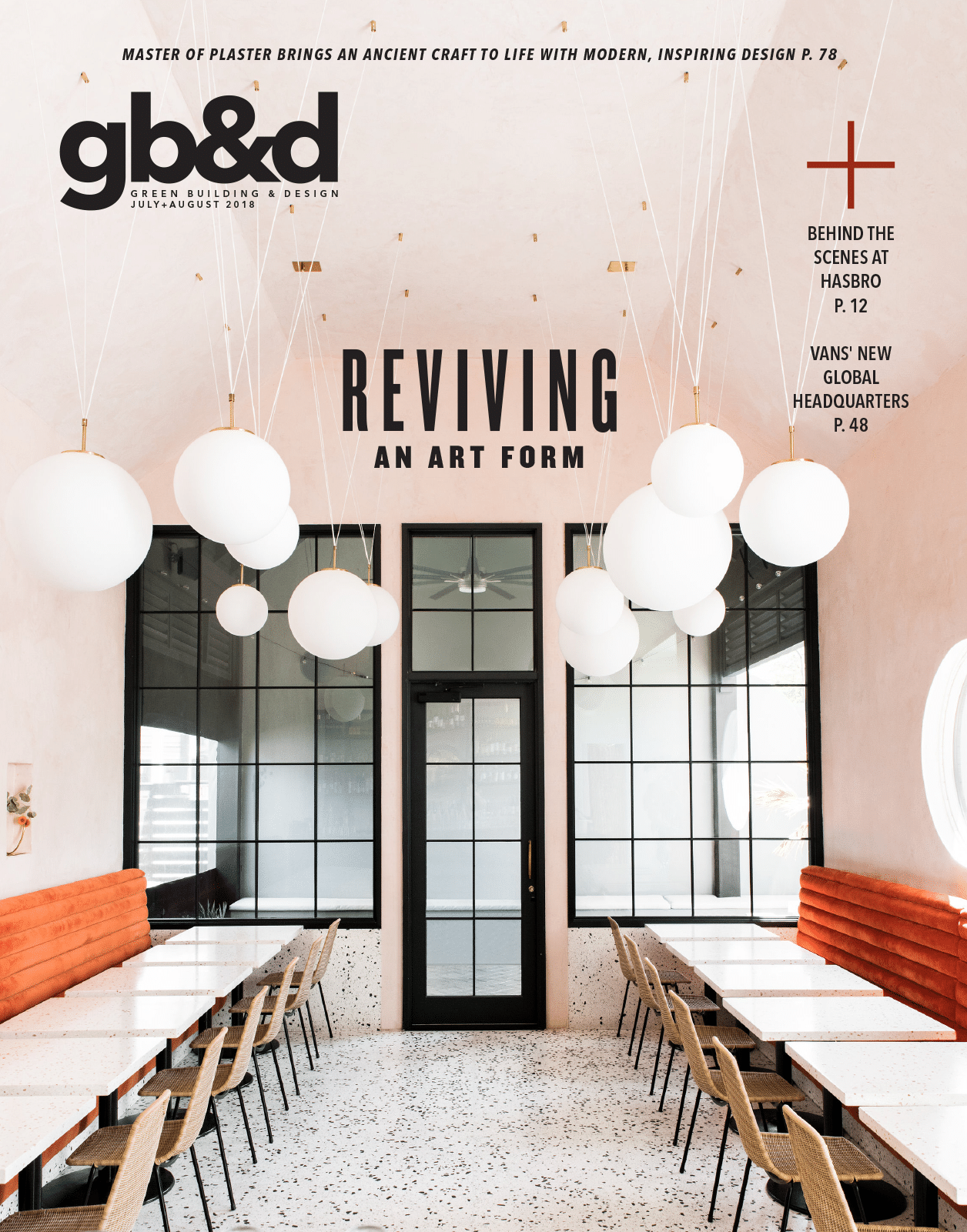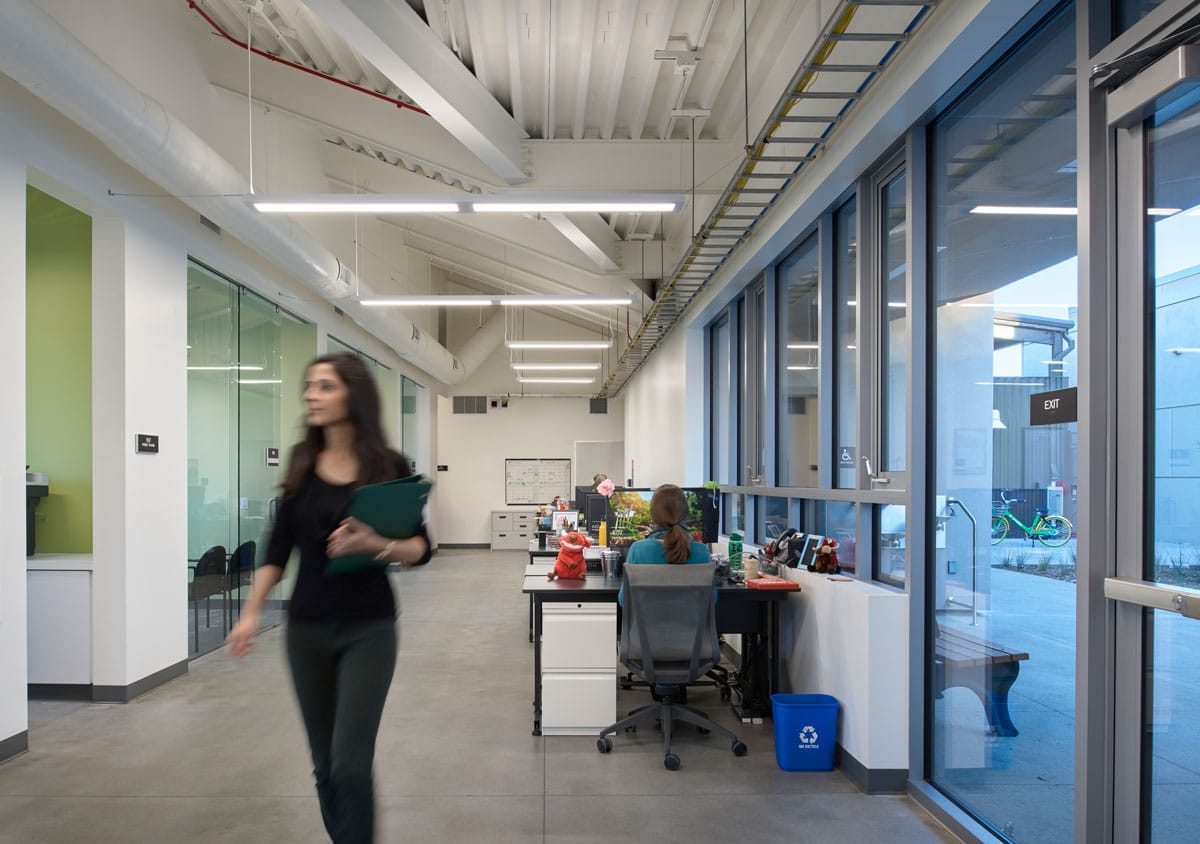
[Photo: Courtesy of Gilbane]
Gilbane works with students to create a sustainability center with a big impact.
What is the right thing to do? At Gilbane Building Company, this question has driven interactions with clients around the world. At Salisbury University in Maryland, it meant diverting 90% of construction waste from landfills. At a high school in Washington, D.C., it meant ensuring more than 90% of classrooms and offices enjoyed natural light. At California State University, Northridge, this question led to the creation of a LEED Platinum, student-funded, student-driven sustainability center that is winning awards and attention throughout the design world for its community impact.
The collaboration behind the CSU Associated Students Sustainability Center—a 9,275-square-foot, $4.5 million build—was an unusual one, involving campus leadership, the CSU Institute for Sustainability, student groups, partners in architecture, construction, and consulting, and other community stakeholders. The goal was to create a multi-functional space to serve as a campus recycling collection station, a hub for student sustainability programs, and an administrative home to the Institute for Sustainability. In short, the vision was to become the focal point for the university’s and surrounding community’s environmental and sustainability programs.
Approximately 30 students participated in the programming phase of building the center, including members of the student government organization Associated Students and students who would be working at the center.
FROM OUR JULY+AUGUST 2018 ISSUE


[Photo: Courtesy of Gilbane]
Gilbane Business Development Manager Evan Synstad says students pushed the sustainability aspects of the project, which included a gray water irrigation system, composting toilets, and the building’s solar roof system. “Those working at the sustainability center were driving for better work environments,” Synstad says. “What makes collaboration successful is having a common goal and working together to achieve that common goal.”
This student-driven project, which was recently awarded a silver honor for sustainability by the Los Angeles Business Journal, has become a point of inspiration for Gilbane’s work, especially in corporate environments. “There will be challenges on the way, but through rough waters we have to keep thinking of what’s best for the project,” Synstad says of taking sustainability to commercial construction.
Often the biggest challenges are budgetary constraints. Or at least the way we think of them. When it comes time to line-item project plans with a red pen, the solar panels, bike racks, and showers start to look a little superfluous. “They’re thought of as a luxury, rather than a necessity to move the bar and shift to a new normal,” Synstad says.

[Illustration: Carolyn Sewell]
A good partner, he says, is tough-minded—someone who can encourage partners to remember they’re creating opportunities for a building’s occupants to lead healthier lifestyles as well as opportunities to lower carbon footprints. “Corporate projects are usually very budget-driven,” he says. “You have to get them to look at the bigger picture, and at Gilbane we take that approach. It’s understanding that sustainability is the right thing to do and educating clients that it’s possible.”
Currently Synstad and the Gilbane team are fired up about another CSU project, one that also focuses on collaborative design and build. Scheduled to be finished in late 2019, the new Student Union building at California State University Monterey Bay will house activity and retail spaces, meeting rooms, lounges, dining services, bookstores, and student organization spaces as well as administrative areas. If all goes as CSU students and their partners plan, the new student union will meet both LEED and Living Building Challenge Petal certifications.

[Illustration: Carolyn Sewell]
Gilbane’s sustainability push is led in part by its Sustainability Council, which works in partnership with construction project teams and project owners to make sure goals like construction waste diversion hit max impact. In 2017 Gilbane diverted more than 90% of construction waste. The company has completed more than 300 LEED certified buildings, including several at the platinum level.
Sustainability Center LEED Platinum Design Features
- Solar panels cover a 5,000-square-foot yard space, providing 25 kilowatts of energy, enough to meet the building’s needs and support the university’s goal of becoming a carbon-neutral campus.
- The solar roof provides hot water for the center’s sinks and showers.
- Used water feeds into a gray water collection tank that irrigates native and drought-tolerant landscaping around the building.
- The center’s air conditioning system uses a connection to windows to maximize ventilation.
- Restrooms include composting toilets that convert waste into clean compost.
